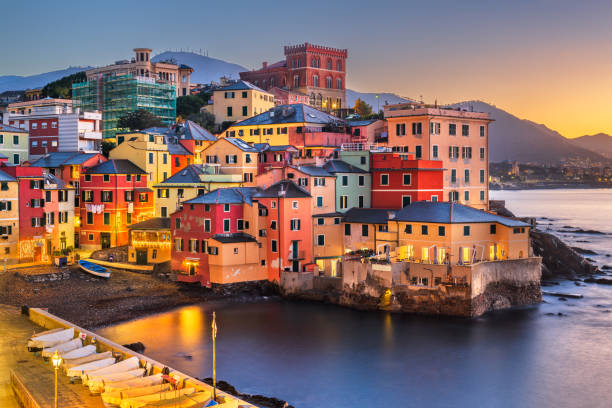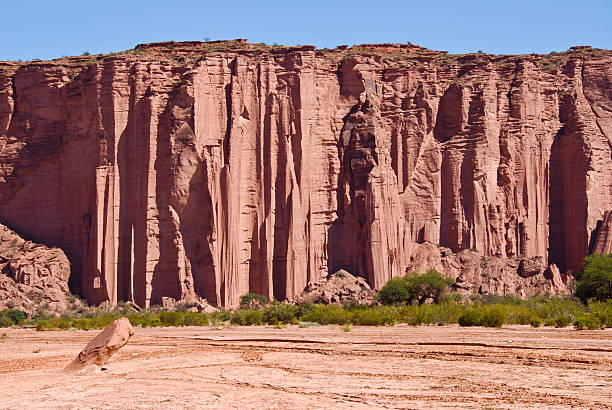Genoa's UNESCO Heritage: Strade Nuove and Palazzi dei Rolli – Architectural Marvels of Renaissance Italy
Genoa, the capital of Italy's Liguria region, boasts one of the most remarkable urban ensembles recognized by UNESCO as a World Heritage Site. The designation "Genoa: Le Strade Nuove and the system of the Palazzi dei Rolli" encompasses a collection of Renaissance and Baroque palaces along innovative urban streets that represent a groundbreaking moment in European urban planning and aristocratic architecture. This extraordinary heritage site, inscribed in 2006, offers profound insights into the political, economic, and cultural zenith of the Republic of Genoa during the late 16th and early 17th centuries.

Historical Context and Significance
The Strade Nuove (New Streets) and the Palazzi dei Rolli (Palaces of the Lists) emerged during what historians often call the "Siglo de los Genoveses" (1563-1640), when Genoa stood at the pinnacle of its financial and maritime power. The Republic of Genoa, through its sophisticated banking system and naval prowess, had become the principal financier of the Spanish Empire, with Genoese bankers playing crucial roles in European economies . This unprecedented wealth created a unique urban phenomenon where private aristocratic residences took on public functions through an innovative system mandated by the Genoese Senate in 1576 .
What makes Genoa's UNESCO site exceptional is that it represents the first example in Europe of an urban development project parceled out by a public authority within a unitary framework, associated with a particular system of 'public lodging' in private residences . Unlike other Italian city-states that built grand ducal palaces or communal buildings to host state visitors, Genoa developed an original solution where private palaces would serve this public function through a lottery system. This arrangement reflected the particular social and economic organization of the Genoese Republic, where mercantile wealth and aristocratic status created a distinctive urban aristocracy .

The Strade Nuove: Revolutionary Urban Planning
The Strade Nuove comprise three principal streets that transformed Genoa's medieval urban fabric:
Via Giuseppe Garibaldi (originally Strada Maggiore or Strada Nuova, 1558-1583): The first and most magnificent of the new streets, designed to showcase Genoa's wealth and power. This straight, wide street represented a dramatic departure from the city's characteristic narrow alleyways (caruggi) .
Via Balbi (1602-1620): Developed later, this street became home to equally impressive palaces and now hosts the University of Genoa .
Via Cairoli (originally Strada Nuovissima, 1778-1786): The last of the three streets to be developed, completing the aristocratic district .
These streets were carefully planned to create an aristocratic quarter that would impress foreign dignitaries and reflect Genoa's status as a major European power. The urban design was revolutionary for its time, creating a unified streetscape where each palace contributed to an overall harmonious effect while maintaining individual architectural distinction .
The construction of these streets required significant engineering feats, particularly because Genoa's hilly terrain presented challenges. Architects developed innovative solutions, including stepped atriums, multi-level gardens, and dramatic staircases that adapted the palaces to the sloping landscape while creating spectacular spatial sequences .
The Palazzi dei Rolli System
The Palazzi dei Rolli system was an ingenious solution to the Republic's need to host state visitors without maintaining a royal palace. In 1576, the Genoese Senate decreed that the city's most magnificent private palaces would be registered on official lists (Rolli) and made available through a lottery system to host visiting dignitaries .
The palaces were categorized into three classes based on their size, beauty, and importance:
First Category: Suitable for hosting the highest dignitaries such as popes, emperors, and kings. Only three palaces originally qualified for this honor: Palazzo Doria Spinola in Salita Santa Caterina, Palazzo Grimaldi Doria Tursi (now part of the Strada Nuova Museums), and Palazzo Lercari Parodi in Via Garibaldi .
Second Category: For cardinals, princes, viceroys, and feudal lords.
Third Category: For ambassadors, governors, and other important visitors .
Over time, five official Rolli lists were created (1576, 1588, 1599, 1614, and 1664), including a total of 162 palaces at various times. Of these, 42 were selected by UNESCO for World Heritage status as representing the finest examples of this unique system .
The Rolli system had profound implications for Genoese architecture. Palace owners competed to create ever more magnificent residences that might be selected for higher categories, leading to an extraordinary flourishing of architectural innovation and artistic decoration. The system also meant that these private residences had to incorporate public functions, resulting in unique spatial organizations that blended private luxury with public ceremonial spaces .
Architectural Characteristics and Innovations
The Palazzi dei Rolli exhibit an astonishing variety of architectural solutions within a coherent urban framework. While each palace has its distinct character, several common features emerge:
Vertical Development: Due to limited urban space, the palaces typically rise three to four stories high, with grand staircases connecting the levels. The staircases often become dramatic architectural features in themselves, with some being open-air and particularly.
Spatial Sequence: Most palaces follow a similar spatial progression: stepped atrium → courtyard → staircase → garden. This sequence was designed to impress visitors while adapting to the sloping terrain .
Facade Design: The street facades display a remarkable variety of treatments, from severe classical orders to elaborate Baroque decorations. Many feature painted decorations (now often faded or lost) that originally made the streets even more colorful .
Interior Splendor: The interiors were decorated with frescoes, stuccowork, and artworks by the leading artists of the day. The ceilings often featured elaborate fresco cycles celebrating the families' achievements or allegorical themes .
Loggias and Gardens: Many palaces feature loggias (covered galleries) that overlook gardens, providing private outdoor spaces with sea views. These gardens were often terraced to accommodate the steep terrain .
The architectural quality of these palaces was so renowned that Peter Paul Rubens published a book in 1622 titled "Palazzi di Genova," documenting their plans and elevations. This publication helped spread Genoese architectural innovations throughout Europe .

Notable Palaces and Their Histories
Among the 42 palaces included in the UNESCO designation, several stand out for their architectural significance and historical importance:
Palazzo Rosso, Palazzo Bianco, and Palazzo Doria Tursi (Via Garibaldi 18, 11, 9)
These three palaces now form the Strada Nuova Museums complex. Palazzo Rosso (Red Palace) and Palazzo Bianco (White Palace) take their names from their exterior colors. They house important art collections including works by Veronese, Caravaggio, and Van Dyck. Palazzo Doria Tursi serves as Genoa's town hall and displays Paganini's famous violin, the "Cannon" .
Palazzo Reale (Via Balbi 10)
Originally built for the Balbi family in 1600, it later became a royal residence of the Savoy family. The palace features 23 state rooms including a magnificent throne room, hall of mirrors, and ballroom, along with a spectacular rooftop garden .
Palazzo Doria-Spinola (Largo Eros Lanfranco 1)
Built for Antonio Doria, this Renaissance palace features elaborate state rooms including an important tapestry room and elegant reception halls. It was one of the three palaces originally designated for hosting the highest dignitaries .
Palazzo Carrega-Cataldi (Via Garibaldi 4)
Designed by Galeazzo Alessi, this palace exemplifies the transition from Renaissance to Baroque styles. Its lavish interior decorations include frescoes and stuccowork by leading artists of the period .
Palazzo Lercari-Parodi (Via Garibaldi 3)
Another of the original three first-category palaces, it features a magnificent atrium and staircase leading to richly decorated reception rooms .
Artistic and Cultural Significance
The Palazzi dei Rolli represent more than just architectural marvels; they embody a crucial moment in European cultural history. The palaces hosted numerous famous visitors during their Grand Tours, helping to disseminate Genoese artistic innovations throughout Europe .
The interiors of these palaces were decorated by some of the most important artists of the period, including:
Fresco Cycles: Many palaces feature elaborate fresco cycles by artists like Giovanni and Giovanni Battista Carlone, who worked on the spectacular dome of the Church of the Gesù, and Andrea Ansaldo, known for his illusionistic dome in the Santissima Annunziata del Vastato .
Stucco Decorations: The palaces showcase exquisite stuccowork that blends architectural and decorative elements, creating unified interior spaces that anticipate Baroque sensibilities .
Textile Arts: Genoa was renowned for its silk production, particularly velvet, and many palaces contained rich textile decorations. Some of these are preserved in museum collections, demonstrating the luxurious interiors of the palaces .
The artistic achievements within the Palazzi dei Rolli influenced architectural and decorative styles across Europe. Rubens' publication of the palaces' designs helped spread Genoese innovations, while the many foreign dignitaries who stayed in these palaces carried ideas back to their home countries .
The Rolli System in Practice
The operation of the Rolli system provides fascinating insights into Genoese society and politics. When important visitors arrived in Genoa, officials would consult the appropriate Rolli list (based on the visitor's status) and select a palace by lottery. The chosen palace owner was then obligated to host the visitor at their own expense .
This system had several important consequences:
Social Competition: The system encouraged aristocratic families to invest in ever more magnificent palaces to improve their chances of being selected for higher categories, driving architectural innovation .
Economic Impact: The need to maintain palaces suitable for state visitors required significant ongoing investment, contributing to Genoa's construction and decorative arts industries .
Political Implications: The system reinforced the oligarchic nature of Genoese government, as the same families who owned the Rolli palaces typically held political power .
The Rolli system remained in operation until the decline of the Republic of Genoa in the late 18th century. Remarkably, the system functioned without major disputes, testifying to its careful organization and the social cohesion of Genoa's ruling class .
UNESCO Recognition and Criteria
UNESCO inscribed "Genoa: Le Strade Nuove and the system of the Palazzi dei Rolli" on the World Heritage List in 2006 based on two primary criteria:
Criterion (ii): The ensemble exhibits an important interchange of human values on the development of architecture and town planning in the 16th and 17th centuries. Through architectural treatises of the time, these examples were publicized, making the Strade Nuove and late-Renaissance palaces of Genoa a significant landmark in the development of Mannerist and Baroque architecture in Europe .
Criterion (iv): The Strade Nuove are an outstanding example of an urban ensemble consisting of aristocratic palaces of high architectural value, which illustrate the economy and politics of the mercantile city of Genoa at the height of its power. The project proposed a new and innovative spirit that characterized the Siglo de los Genoveses (1563 to 1640) .
The UNESCO designation covers a core area of 15.777 hectares with a buffer zone of 113 hectares, protecting not just individual buildings but the entire urban context that gives them meaning .
Conservation and Contemporary Use
Today, many of the Palazzi dei Rolli have been adapted for new uses while preserving their architectural integrity:
Museums: Several palaces now house museums, most notably the Strada Nuova Museums complex (Palazzo Rosso, Palazzo Bianco, and Palazzo Doria Tursi) .
Public Institutions: Many palaces serve as government offices, university buildings, or cultural institutions. For example, Palazzo Ducale, while not part of the Rolli system, is a major cultural center nearby .
Private Residences: Some palaces remain private homes, though often with portions open to the public .
Banks and Businesses: The ground floors of several palaces have been adapted for commercial use, particularly by banks that appreciate the prestigious addresses .
Conservation efforts focus on maintaining the architectural integrity of the palaces while adapting them to modern uses. The unified urban fabric of the Strade Nuove is carefully protected to preserve the ensemble's overall character .
Visiting the UNESCO Site
For visitors today, the Strade Nuove and Palazzi dei Rolli offer a unique urban experience. Key recommendations for visitors include:
Via Garibaldi: This street alone contains numerous important palaces open to the public, including the Strada Nuova Museums. The street itself is worth admiring for its unified architectural composition .
Guided Tours: Specialized tours explore the Rolli palaces, explaining their history and architectural features. Some tours focus on particular aspects like the fresco cycles or architectural details .
Museum Passes: Combined tickets provide access to multiple palace museums, typically costing around €12 for 24-hour access .
Architectural Details: Visitors should look for characteristic features like the ornate portals, grand staircases, and interior courtyards that define the Rolli palace typology .
Contextual Understanding: To fully appreciate the site, visitors should consider both the individual palaces and the overall urban system they comprise - the innovative street layout, the relationship between buildings, and the way the ensemble functioned historically .
Genoa's Maritime Context
While not part of the UNESCO designation, Genoa's port and maritime history provide essential context for understanding the Strade Nuove and Palazzi dei Rolli. The wealth that built these palaces came primarily from Genoa's maritime commerce and banking activities .
The port of Genoa has been central to the city's identity since ancient times. By the 12th century, Genoa had become a major commercial hub for luxury goods from the East and Flanders, generating banking activities that made Genoese bankers key players in Europe's economy . This maritime and financial power directly funded the construction of the Rolli palaces and the development of the Strade Nuove.
The Palazzo San Giorgio, near the port, symbolizes this connection. Built in 1260, it housed the Banco di San Giorgio, a precursor of modern banks that financed much of Genoa's commercial and political power . The maritime wealth also supported cultural achievements, as seen in the artistic decorations of the palaces.
Legacy and Influence
The legacy of Genoa's Strade Nuove and Palazzi dei Rolli extends far beyond the city itself. The architectural innovations developed here influenced urban planning and aristocratic architecture throughout Europe:
Urban Planning: The concept of planned "new streets" for aristocratic residences was emulated in other cities, while the unified treatment of street facades set precedents for later urban design .
Architectural Publications: Rubens' "Palazzi di Genova" (1622) spread Genoese architectural ideas across Europe, influencing palace design in other countries .
Spatial Concepts: The innovative spatial sequences in the palaces, particularly the atrium-courtyard-staircase-garden progression, became models for aristocratic residences elsewhere .
Integration of Arts: The palaces' integration of architecture, painting, sculpture, and decorative arts anticipated the Baroque synthesis that would dominate European art in the 17th century .
The UNESCO designation has helped recognize this broader significance, positioning Genoa's architectural achievements as crucial to understanding the development of European urbanism and aristocratic architecture .
Conclusion
Genoa's UNESCO World Heritage Site of Le Strade Nuove and the system of the Palazzi dei Rolli represents a unique moment in urban and architectural history. It showcases how a mercantile republic at the height of its power expressed its identity through innovative urban planning and sophisticated architecture. The ensemble reflects not just artistic achievement but a complete social and economic system where private wealth served public functions in a carefully orchestrated urban setting.
The palaces, with their varied architectural solutions adapted to challenging terrain and specific social requirements, demonstrate extraordinary creativity within a coherent urban framework. The Rolli system itself represents an original solution to the challenge of state hospitality, one that fostered architectural excellence while reinforcing social structures.
Today, this heritage remains remarkably intact, allowing visitors to experience both individual architectural masterpieces and an entire urban system that transformed European ideas about city planning and aristocratic residence. As both a collection of magnificent buildings and a testament to a particular historical moment, Genoa's UNESCO site offers unparalleled insights into the connections between architecture, urbanism, and society in early modern Europe.
The ongoing preservation and adaptive reuse of these palaces demonstrate how historical architecture can remain vital in contemporary life while maintaining its cultural significance. As such, "Genoa: Le Strade Nuove and the system of the Palazzi dei Rolli" stands not just as a monument to the past, but as a living example of how urban heritage can enrich present-day city life.
Photo: Pixabay, iStock,




